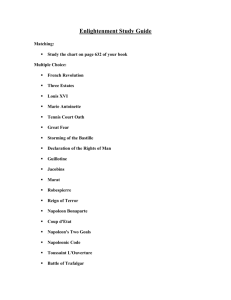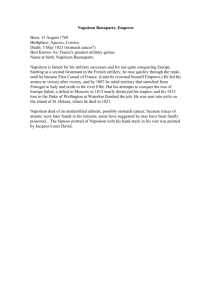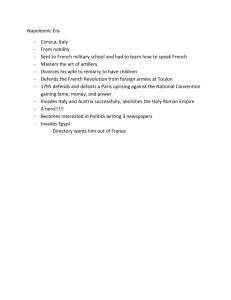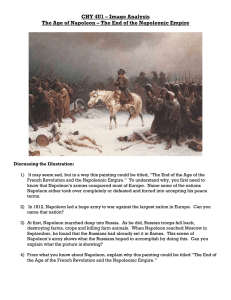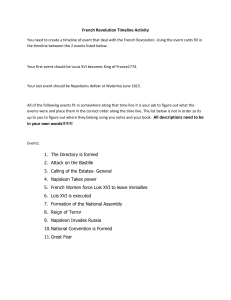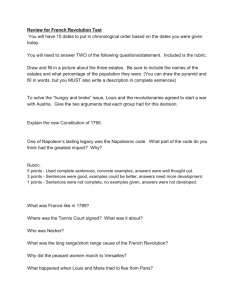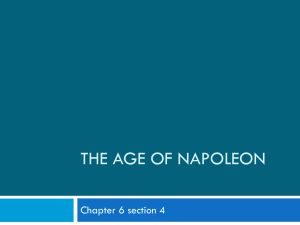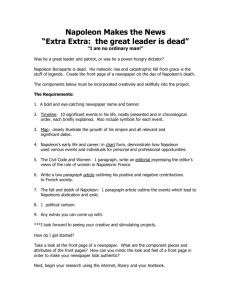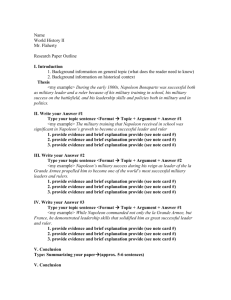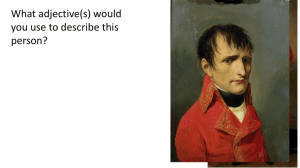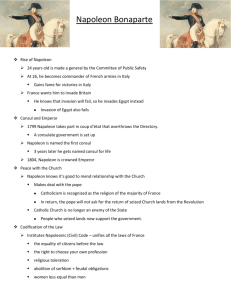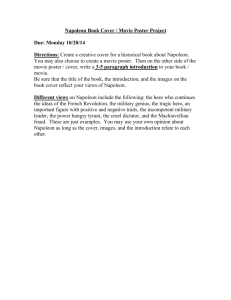File - Ms. Zajac
advertisement
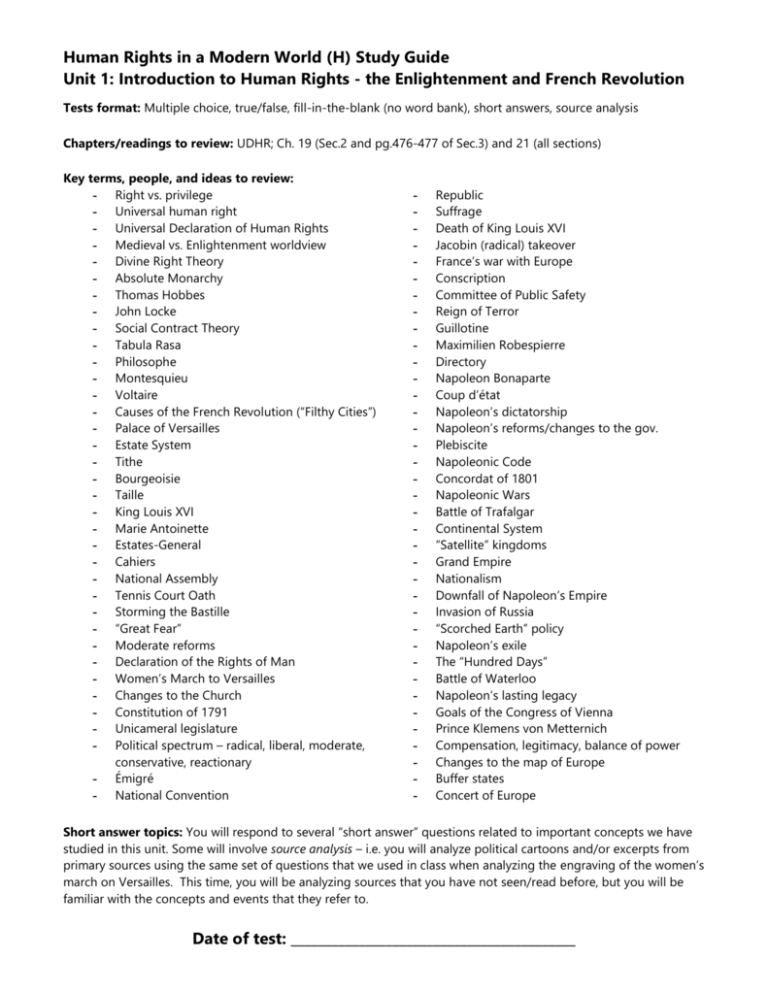
Human Rights in a Modern World (H) Study Guide Unit 1: Introduction to Human Rights - the Enlightenment and French Revolution Tests format: Multiple choice, true/false, fill-in-the-blank (no word bank), short answers, source analysis Chapters/readings to review: UDHR; Ch. 19 (Sec.2 and pg.476-477 of Sec.3) and 21 (all sections) Key terms, people, and ideas to review: - Right vs. privilege - Universal human right - Universal Declaration of Human Rights - Medieval vs. Enlightenment worldview - Divine Right Theory - Absolute Monarchy - Thomas Hobbes - John Locke - Social Contract Theory - Tabula Rasa - Philosophe - Montesquieu - Voltaire - Causes of the French Revolution (“Filthy Cities”) - Palace of Versailles - Estate System - Tithe - Bourgeoisie - Taille - King Louis XVI - Marie Antoinette - Estates-General - Cahiers - National Assembly - Tennis Court Oath - Storming the Bastille - “Great Fear” - Moderate reforms - Declaration of the Rights of Man - Women’s March to Versailles - Changes to the Church - Constitution of 1791 - Unicameral legislature - Political spectrum – radical, liberal, moderate, conservative, reactionary - Émigré - National Convention - Republic Suffrage Death of King Louis XVI Jacobin (radical) takeover France’s war with Europe Conscription Committee of Public Safety Reign of Terror Guillotine Maximilien Robespierre Directory Napoleon Bonaparte Coup d’état Napoleon’s dictatorship Napoleon’s reforms/changes to the gov. Plebiscite Napoleonic Code Concordat of 1801 Napoleonic Wars Battle of Trafalgar Continental System “Satellite” kingdoms Grand Empire Nationalism Downfall of Napoleon’s Empire Invasion of Russia “Scorched Earth” policy Napoleon’s exile The “Hundred Days” Battle of Waterloo Napoleon’s lasting legacy Goals of the Congress of Vienna Prince Klemens von Metternich Compensation, legitimacy, balance of power Changes to the map of Europe Buffer states Concert of Europe Short answer topics: You will respond to several “short answer” questions related to important concepts we have studied in this unit. Some will involve source analysis – i.e. you will analyze political cartoons and/or excerpts from primary sources using the same set of questions that we used in class when analyzing the engraving of the women’s march on Versailles. This time, you will be analyzing sources that you have not seen/read before, but you will be familiar with the concepts and events that they refer to. Date of test: __________________________________________
